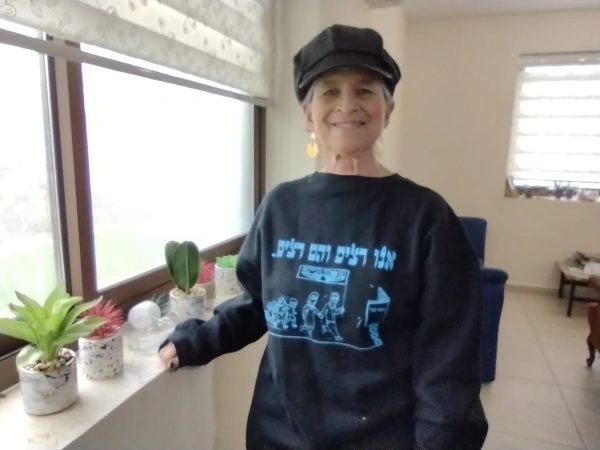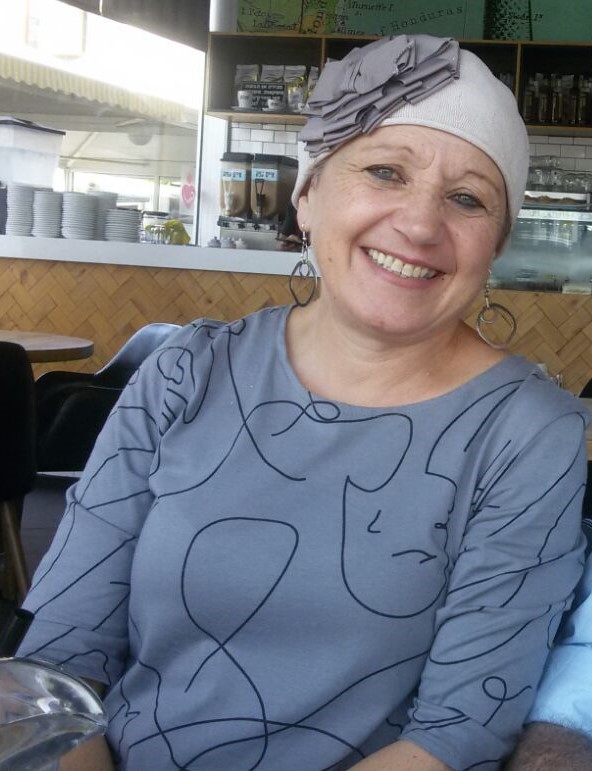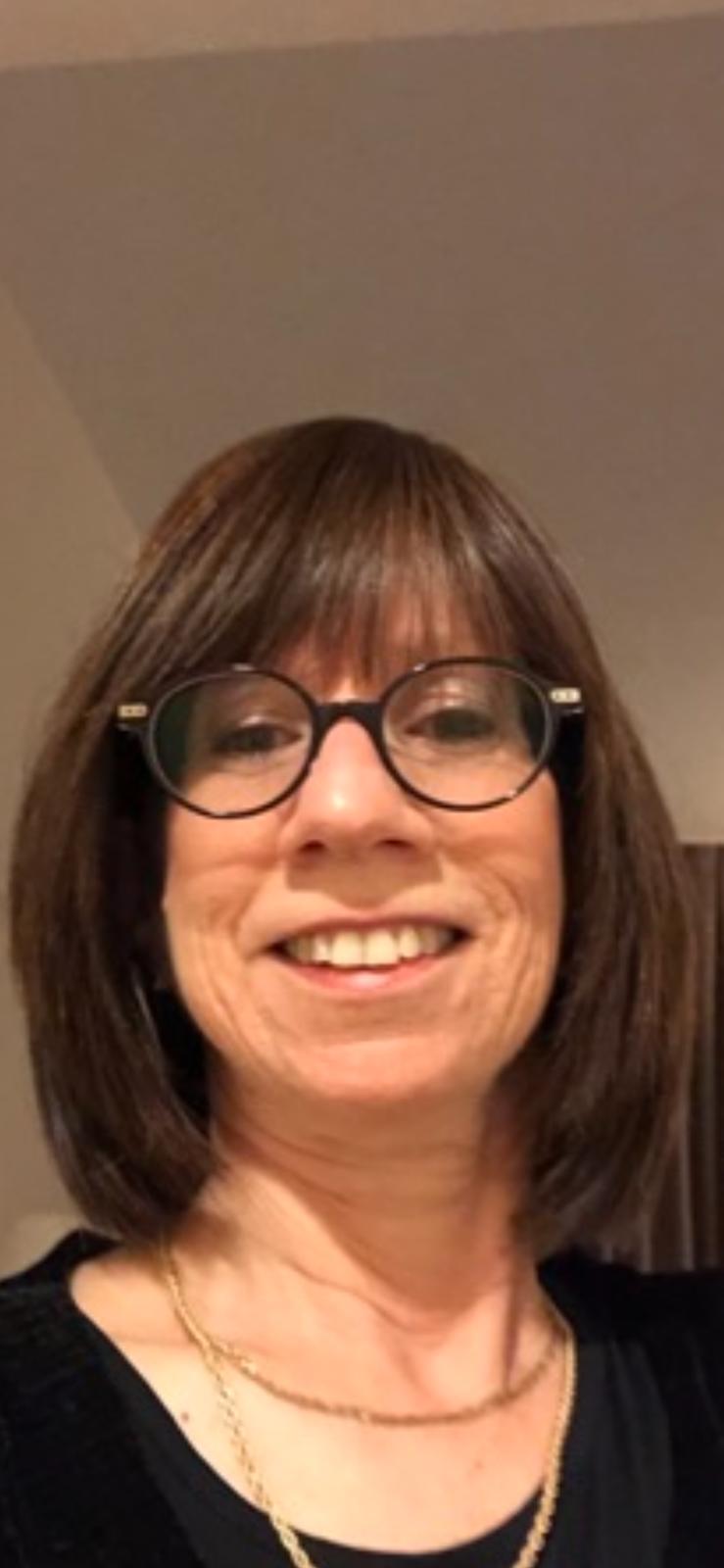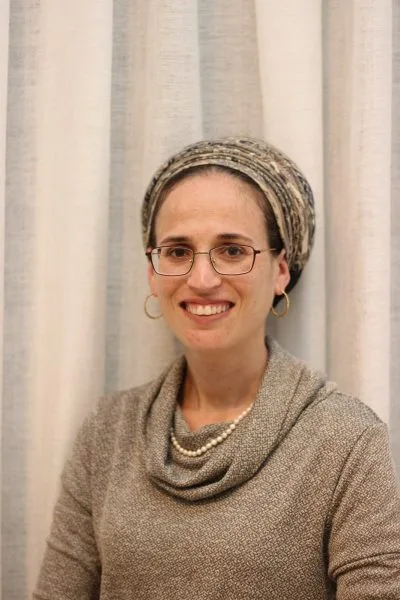הגמרא ממשיכה לדון בין הבדלים לשחיטה/מליקה ולבין שחיטת בהמה לשחיטת העוף.
לימוד השבוע מוקדש ע”י טינה לם לע”נ יצחק מאיר בן הרב צבי אריה ואסתר בתיה.
רוצים להקדיש למידה? התחל כאן:
לימוד השבוע מוקדש ע”י טינה לם לע”נ יצחק מאיר בן הרב צבי אריה ואסתר בתיה.
העמקה
רוצה להבין מה באמת קורה מתחת לפני השטח של הסוגיה?
שיעורים, פודקאסטים והרחבות של מיטב המורות שלנו יפתחו לך עוד זוויות וכיווני חשיבה.
חדשה בלימוד הגמרא?
זה הדף הראשון שלך? איזו התרגשות עצומה! יש לנו בדיוק את התכנים והכלים שיעזרו לך לעשות את הצעדים הראשונים ללמידה בקצב וברמה שלך, כך תוכלי להרגיש בנוח גם בתוך הסוגיות המורכבות ומאתגרות.
פסיפס הלומדות שלנו
גלי את קהילת הלומדות שלנו, מגוון נשים, רקעים וסיפורים. כולן חלק מתנועה ומסע מרגש ועוצמתי.
חולין כ
ואי ס”ד מחזיר דוקא מאי איריא מולק אפי’ שוחט נמי אלא לאו שמע מינה אף מחזיר ומתני’ בדלא אהדר
And if it enters your mind that the mitzva is specifically to move the simanim behind the nape and pinch them, why did the tanna say specifically that if one pinches in this manner it is valid? Even if one slaughters from the nape in this manner the slaughter would be valid. Rather, must one not conclude from it that the proper understanding is: One may even move the simanim behind the nape and pinch, and the mishna is referring to a case where one did not move the simanim behind the nape.
א”ר ינאי יקבלו הרובין את תשובתן דקתני נמצא כשר בשחיטה פסול במליקה כשר במליקה פסול בשחיטה למעוטי מאי לאו למעוטי מחזיר סימנין לאחורי העורף דלא
Rabbi Yannai says: The young ones [rovin], the sons of Rabbi Ḥiyya, shall receive their response that rejects their statement from that which is taught in the mishna: It is found that that which is valid for slaughter is not valid for pinching and that which is valid for pinching is not valid for slaughter. What does this statement serve to exclude? Does it not serve to exclude the case where one moves the simanim behind the nape, teaching that it is valid only for slaughter and not for pinching?
אמר רבה בר בר חנה לא למעוטי שן וצפורן שן וצפורן בהדיא קתני להו
Rabba bar bar Ḥana said: No, perhaps it serves to exclude one who uses a tooth or a fingernail that is not detached, which are valid for pinching and not valid for slaughter. The Gemara objects: That could not be, as the tanna teaches explicitly the case of a tooth and a fingernail in a mishna (15b), and there was no need to repeat it.
אלא א”ר ירמיה למעוטי מוליך ומביא הניחא למ”ד מוליך ומביא במליקה פסול אלא למ”ד כשר מאי איכא למימר בני ר’ חייא סברי לה כמ”ד מוליך ומביא במליקה פסול
Rather, Rabbi Yirmeya said: The statement of the mishna: That which is valid for slaughter is not valid for pinching, serves to exclude drawing back and forth. One who pinches may not cut the simanim by drawing his fingernail back and forth. Rather, he must press and cut them in one motion. The Gemara asks: This works out well according to the one who says: Drawing back and forth for pinching is not valid, but according to the one who says: It is valid, what is there to say? The Gemara answers: The sons of Rabbi Ḥiyya hold in accordance with the one who says: Drawing back and forth for pinching is not valid.
אמר רב כהנא מצות מליקה קוצץ ויורד וזו היא מצותה סבר רבי אבין למימר קוצץ ויורד אין מוליך ומביא לא א”ל ר’ ירמיה כ”ש דמוליך ומביא במליקה כשר ומאי זו היא מצותה אימא אף זו היא מצותה:
Rav Kahana says: The mitzva of pinching is that one cuts with his fingernail from the nape and continues downward, and that is its mitzva. Rabbi Avin thought to say: Cuts and continues downward, yes; draws back and forth, no. Rabbi Yirmeya said to him: All the more so that drawing back and forth for pinching is valid. The Gemara asks: And what is the meaning of the phrase: That is its mitzva, which indicates that it is specifically in that manner? The Gemara answers: Say that it means: That too is its mitzva.
א”ר ירמיה אמר שמואל כל הכשר בשחיטה כנגדו בעורף כשר במליקה הא פסול בשחיטה פסול במליקה למעוטי מאי אילימא למעוטי עיקור סימנין והא תני רמי בר יחזקאל אין עיקור סימנין בעוף
§ Rabbi Yirmeya says that Shmuel says: Any place that is valid for slaughter on the throat is correspondingly valid for pinching on the nape. By inference, any place on the throat that is not valid for slaughter is not valid for pinching. The Gemara asks: What does this statement serve to exclude? If we say that it serves to exclude ripping the simanim from their place before cutting them, which is invalid with regard to pinching just as with regard to slaughter, but didn’t Rami bar Yeḥezkel teach: There is no disqualification of ripping the simanim in the case of a bird?
אמר רב פפא למעוטי ראשו ראשו פשיטא (ויקרא ה, ח) ממול ערפו אמר רחמנא ולא בראשו
Rav Pappa said: It serves to exclude pinching the occipital bone at the back of its head; just as it is not the place of slaughter, it is not the place of pinching. The Gemara asks: Isn’t it obvious that pinching at the back of its head is not valid? The Merciful One states: “Adjacent to its nape,” and not at its head.
מאי ראשו שיפוי ראשו כגון דנקט משיפוי ראשו והגרים ואזל עד דמטא תתאי וכדרב הונא אמר רב אסי דאמר רב הונא אמר רב אסי הגרים שליש ושחט שני שליש פסולה
The Gemara answers: What is its head that is not the place for pinching? It is the incline of its head, e.g., in a case where one began at the incline of its head and diverted and continued until he reached below to the place of the simanim, where he completed the pinching. Since he began the process in the incorrect location, it is invalid, similar to slaughter. And this is in accordance with the opinion that Rav Huna says that Rav Asi says, as Rav Huna says that Rav Asi says: If one diverted the knife upward and cut one-third of the windpipe and then cut two-thirds within the ring, the slaughter is not valid.
אמר ליה רב אחא בריה דרבא לרב אשי הא דתני רמי בר יחזקאל אין עיקור סימנין בעוף לא אמרן אלא למ”ד אין שחיטה לעוף מן התורה
Rav Aḥa, son of Rava, said to Rav Ashi: With regard to that which Rami bar Yeḥezkel teaches: There is no disqualification for ripping simanim in a bird, we say it only according to the one who says: There is no source for the slaughter of a bird in the Torah.
אבל למ”ד יש שחיטה לעוף מן התורה יש עיקור
But according to the one who says: There is a source for the slaughter of a bird in the Torah, there is disqualification for ripping simanim in a bird as well.
אמר ליה אדרבה איפכא מסתברא למאן דאמר יש שחיטה לעוף מן התורה איכא למימר דהכי אגמריה דאין עיקור ואפי’ למאן דאמר כבהמה לענין עיקור לא ליהוי כבהמה
Rav Ashi said to him: On the contrary, the opposite is reasonable. According to the one who says: There is a source for the slaughter of a bird in the Torah, the halakhot of slaughter are not explicit and were transmitted to Moses orally, and it can be said that this is what God taught him, that there is no disqualification for ripping simanim. And even according to the one who says that the halakhic status of a bird is like that of an animal, as the halakhot of the slaughter of a bird are derived from the halakhot of the slaughter of an animal, perhaps God taught Moses that with regard to the matter of ripping simanim it will not be like an animal.
אלא למ”ד אין שחיטה לעוף מן התורה אלא מדברי סופרים מהיכא גמירי לה מבהמה כולה מילתא כבהמה
But according to the one who says: There is no source for the slaughter of a bird in the Torah, but rather it is by rabbinic law, from where are the halakhot of the slaughter of a bird learned? They are learned from the halakhot of the slaughter of an animal; consequently, the entire matter of the slaughter of a bird is like that of an animal.
אמר רבינא אמר לי רבין בר קיסי הא דתני רמי בר יחזקאל אין עיקור סימנין בעוף לא אמרן אלא במליקה אבל בשחיטה יש עיקור והא”ר ירמיה אמר שמואל כל הכשר בשחיטה כנגדו בעורף כשר במליקה הא פסול פסול ההוא פליגא
Ravina said: Ravin bar Kisi said to me: With regard to that which Rami bar Yeḥezkel teaches, i.e., that there is no disqualification for ripping simanim in a bird, we say it only with regard to pinching, but with regard to slaughter, there is disqualification for ripping simanim. The Gemara objects: But doesn’t Rabbi Yirmeya say that Shmuel says: Any place that is valid for slaughter on the throat is correspondingly valid for pinching on the nape, but that which is not valid for slaughter is not valid for pinching. The Gemara explains: That halakha disagrees with this statement of Shmuel.
אמר זעירי נשברה מפרקת ורוב בשר עמה נבלה
§ Ze’eiri says: If the neck bone of an animal or a bird was broken and most of the surrounding flesh was cut with it, the status of the animal or the bird is that of an unslaughtered carcass. It is dead and can no longer be rendered fit by slaughter.
אמר רב חסדא אף אנן נמי תנינא מלק בסכין מטמא בגדים אבית הבליעה ואי אמרת טרפה הויא מליקתה זו היא שחיטתה תהני לה סכין לטהרה מידי נבלה
Rav Ḥisda said that we learn this in a mishna (Zevaḥim 68a) as well: If one pinched a bird offering with a knife and not with his thumbnail, the bird renders the garments of one who swallows it impure when it is in the throat, which is the halakha in the case of an unslaughtered carcass of a kosher bird. And if you would say that if the neck bone of an animal or a bird was broken and most of the surrounding flesh was cut with it, the bird is not an unslaughtered carcass but it is a tereifa, then since with regard to a bird offering its pinching is its slaughter, let pinching with a knife be effective to purify the bird from the impurity of an unslaughtered carcass, as a tereifa does not transmit impurity when slaughtered properly. From the halakha that pinching with a knife does not render the bird pure it is evident that when its neck bone is broken the bird is rendered an unslaughtered carcass.
אמרי התם משום דלאו שחיטה היא כלל מאי טעמא רב הונא אמר מפני שהוא מחליד רבא אמר מפני שהוא דורס
The Sages say in response: There, pinching with a knife is ineffective in rendering it pure not because the breaking of the neck bone renders the bird an unslaughtered carcass. Rather, it is because it is not slaughter at all. The Gemara asks: What is the reason? Rav Huna says: It is because he conceals the knife and performs an inverted slaughter, which invalidates the slaughter. Rava says: It is because he presses the knife.
מ”ד מפני שהוא מחליד מ”ט לא אמר מפני שהוא דורס קסבר מוליך ומביא במליקה כשר ומ”ד מפני שהוא דורס מאי טעמא לא אמר מפני שהוא מחליד אמר לך חלדה היכי דמי כחולדה הדרה בעיקרי בתים דמכסיא הכא הא מיגליא
The Gemara asks: With regard to the one who says: Because he conceals the knife and performs an inverted slaughter, what is the reason that he does not say: Because he presses the knife? The Gemara answers: It is because he holds that drawing back and forth in pinching is valid. The Gemara asks: And the one who says: Because he presses the knife, what is the reason that he does not say: Because he conceals [maḥlid] the knife? The Gemara answers that he could have said to you: What are the circumstances of concealing the knife? It is like a rat [ḥulda] that resides in the foundations of houses that are concealed. Here, when he begins cutting from the nape of the neck, that knife is exposed.
אמר רבא אי קשיא לי הא קשיא לי וכי מתה עומד ומולק
Rava said: If that which Ze’eiri said: If the neck bone of an animal or a bird was broken and most of the surrounding flesh was cut with it, the status of the animal or the bird is that of an unslaughtered carcass, is difficult for me, this is difficult for me: How does pinching a bird offering prepare it for sacrifice? Since pinching involves breaking the neck bone and cutting most of the surrounding flesh with it before cutting the simanim, what significance is there to pinching the simanim? And does he stand and pinch a dead bird? If it is dead, of what use is the pinching?
א”ל אביי ותקשי לך עולת העוף דבעיא שני סימנין וכי מתה עומד ומולק אמר ליה התם כדי לקיים בה מצות הבדלה
Abaye said to him: And even without the statement of Ze’eiri, let the case of a bird burnt offering be difficult for you, as it requires cutting of two simanim. Since slaughter of a non-sacred bird requires cutting of one siman, once one siman is cut the bird is considered dead for all intents and purposes, and does he stand and pinch a dead bird? Rava said to him: There, he continues pinching in order to fulfill through it the mitzva of separation between the head and the body in the bird burnt offering.
אי הכי עור נמי כל המעכב בשחיטה מעכב בהבדלה וכל שאינו מעכב בשחיטה אינו מעכב בהבדלה
The Gemara asks: If so, there should be an obligation to cut the skin of the bird as well in order to fulfill the mitzva of separation. Abaye answers: Any element that invalidates slaughter invalidates separation, and any element that does not invalidate slaughter does not invalidate separation. Failure to cut the skin does not invalidate slaughter.
והא מיעוט סימנין לרבנן דלא מעכבי בשחיטה ומעכבי בהבדלה אלא אימא כל שישנו בשחיטה ישנו בהבדלה וכל שאינו בשחיטה אינו בהבדלה
The Gemara objects: But isn’t there the minority of the simanim according to the Rabbis, which do not invalidate slaughter, as, if one slaughtered a majority of the simanim and a minority remained uncut, the slaughter is valid, and they hold that they invalidate separation? The Gemara clarifies: Rather, say: Any element that is in effect with regard to slaughter is in effect with regard to separation, and any element that is not in effect with regard to slaughter is not in effect with regard to separation. The two simanim, although they do not invalidate slaughter, are part of the mitzva of slaughter, while the skin is not part of the mitzva of slaughter.




































